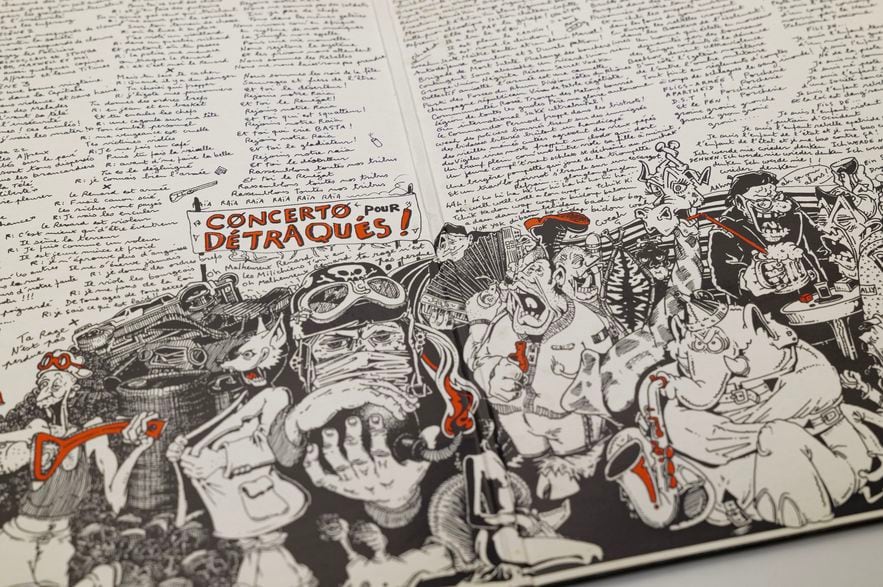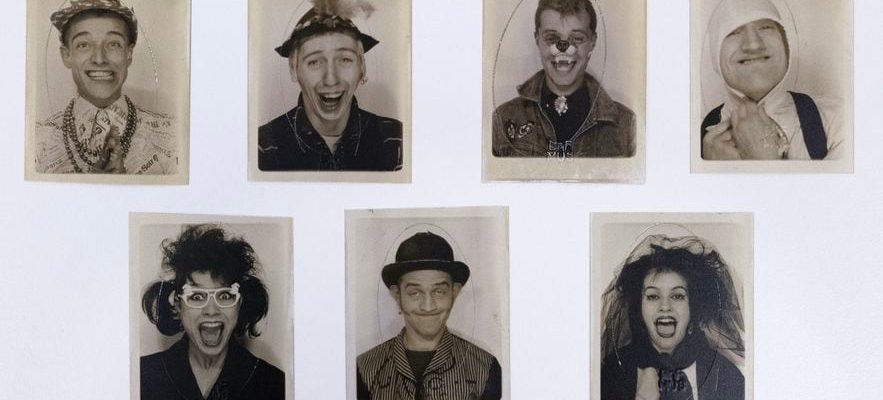These are the first archives of the French punk movement to integrate the funds of a public institution. In 2021, two ex-Bérurier noir, the singer Fanfan, also known as FanXoa (François Guillemot), and the saxophonist mastO (Thomas Heuer), donated their archives to the Bibliothèque nationale de France (BnF), which is exhibiting them today today on the François-Mitterrand site, in Paris 13th arrondissement, until April 28. Around a hundred pieces, photographs, notebooks, posters and videos are displayed to offer visitors a real immersion in the emergence of the alternative music scene in France.
Fanfan and Loran (Loran Béru) founded Bérurier noir in 1983, under the influence of the punk wave which swept through France at the end of the 1970s. Lacking a dedicated venue, the tandem, accompanied by their drum machine Dédé, occurs in industrial wastelands and Parisian squats, in the street or the metro. Their first recordings were released with the support of the independent labels Visa and Bondage, while new members from music or the circus strengthened the troupe. Among them, mastO, co-founder of the cult group Lucrate Milk, studied at the Beaux-Arts in Paris, just like Fanfan. Together, they forged the visual identity of the Bérus – BxN for short -, the first immortalizing tours and rehearsals with his lens, the second composing, alongside the designer Laul, posters, covers and fanzines.
Photo booths of the members of Bérurier Noir used in the composition of the cover of the album “Abracadaboum!” released in 1987.
/ © Elie Ludwig / Bnf
The band’s concerts soon turned into crazy performances: to the saturated guitars were added crazy accessories – Asian masks, pig’s noses or butcher’s fangs -, carried around in the famous trunks which would become the emblem of Bérurier noir and its “small theater of force”. Success arrives, the Bérus go from the Pali-Kao factory, in Belleville, to the Zénith de France, until the final triumph at the Olympia which marks their public self-scuttle.
Because, while the punk movement became politicized in France, the first generation of arty rebels gave way to keupon, the RG closely monitor Bérurier noir, whom they suspect of collusion with terrorist movements, like Black War. If the libertarian aspirations of the Bérus join those of certain small extremist groups encountered in the squats, “their commitment can be summed up by the adage ‘As long as there is darkness there is hope'”, point out Benoît Cailmail and Emilie Kaftan, from the BnF. “We define ourselves as a folklore group from the global zone, which comments on current events and considers culture in a global way. We defend human rights everywhere. Like independent reporters,” BxN confides to Libé in March 1988. At the height of its glory, the group kept its rejection of the social order from punk, but distinguished itself by its desire to transform the struggle into positive energy. “Listen to the youth of France/Be united to win/The future is not violence/But solidarity…”, he proclaims in the title Minors at risk released in stores that same year.

Detail of the cover of the album “Concerto pour détraqués” by Bérurier noir, 1985.
/ © Elie Ludwig / Bnf
Throughout their legendary albums, Concerto for deranged people (1985) to Often broke, always hammer (1989), the Bérus were, in the space of six crazy years, key players and witnesses to the emergence of French alternative rock. And even if the group reformed sporadically between 2003 and 2006, it is this unbridled period of the 1980s that remains in the collective memory, when these uninhibited followers of DIY (Do It Yourself) crystallized the emergence of a new scene organized outside the majors and traditional circuits.
